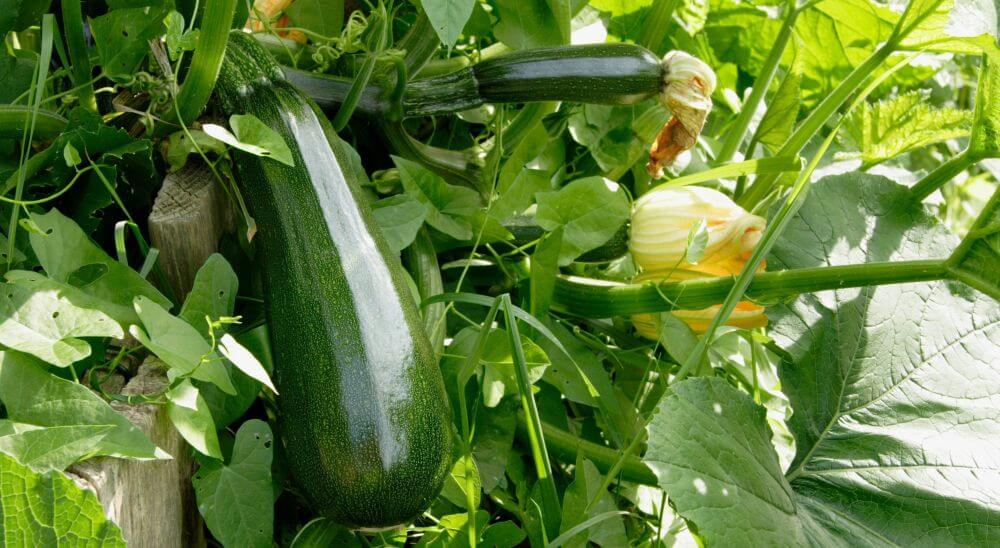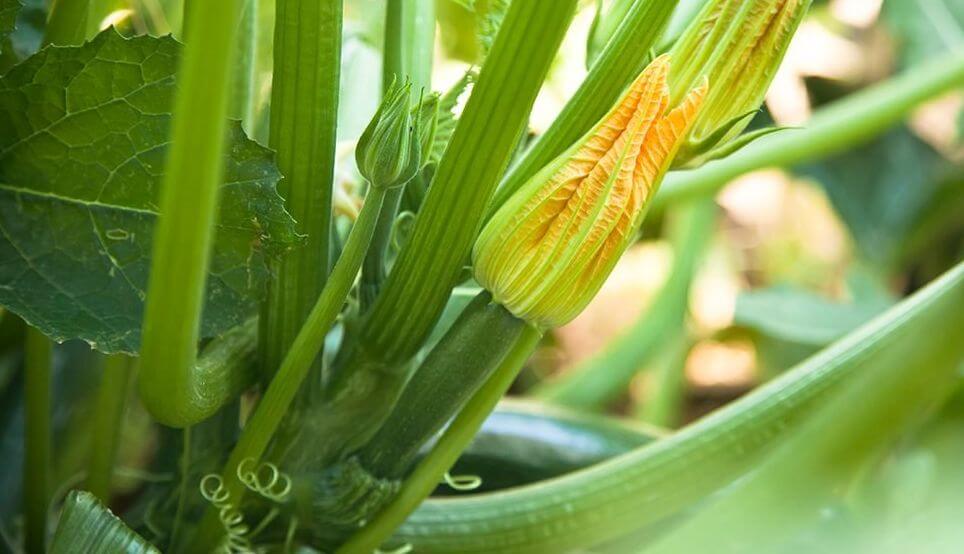
Growing zucchini is popular because zucchini is one of the easiest plants to grow in your garden. Most gardeners can plant a few zucchini seedlings and watch the plants grow quickly without any problems.
I love courgettes. Aside from tomatoes, courgettes are the only vegetable that really announces summer to me. I love a lot of zucchini recipes. So I want to make sure our harvest is plentiful and that’s usually what happens. In fact, our harvest tends to be so bountiful that I beg my parents, family, and friends to take their share as well.
Here are some tips we use for growing zucchini plants.
1) Plant at the right time
Courgette plants are NOT frost friendly at all. If you plant your zucchini plants before the threat of frost passes, you risk your entire crop.
Courgettes don’t even like the cold but I can’t blame them!
So this means resisting temptation and not planting too early. If the fruits form in cold weather, they are unlikely to grow well.
2) Choose the right place
Once you have found the right time to plant your zucchini, you need to decide where to plant the zucchini in your garden. The location you choose should receive full sun, so a garden bed shaded by a large tree is a poor choice!
It should also be a moist, well-drained location. The site shouldn’t be soaked though! Be sure to add compost and organic matter to the soil you have selected for growing zucchini plants.

3) Use succession planting
Many people don’t realize that growing zucchini plants is a good option for succession planting because they are not frost hardy. When we think of succession planting, we think of plants that grow from spring to fall, not summer-loving plants.
Zucchini plants break this mold. These plants grow quickly and you can usually harvest the first fruits 40-60 days after planting.
To avoid drowning in piles of zucchini (which is actually not a bad thing if you LOVE zucchini), start new plants two or three times per season. This allows you to extend the harvest season. Zucchini plants tend to produce a lot of fruit all at once, then slow to a stop.
Best of all, you don’t need to start zucchini plants indoors. Simply plant these seeds in the soil.
4) Plant mounds of zucchini
Plant a mound of 2 or 3 zucchini plants together. This is important because zucchini have flowers that need to be pollinated to create the fruit you want. These flowers open for 1 day. Yes, only 1 day! If pollination fails, you don’t get zucchini, and that would be a shame. Planting multiple plants together improves the chances of pollination. Gardeners can choose to purchase seedlings or plant zucchini seeds directly in the garden.

5) Understand zucchini pollination
So, now you know that the flowers open for a day, but did you know that there are both male and female flowers on a zucchini plant. Both male and female flowers open at the same time, but only one female flower creates fruit. The male flowers serve only for pollination.
On most new plants, the male flowers tend to set first and then you get frustrated that your plant is bursting with flowers without any fruit forming. Don’t worry yet, especially if you see pollinating insects hanging around. The female flowers are coming.
The female flowers have small fruits behind the base of the flower, making them easy to distinguish. If you are concerned about your crop, you can remove the male flowers and pollinate the female flowers yourself.
6) Mulch around your plants
Once the seedlings emerge from the soil and become established, place mulch around the base of your plants. This helps keep weeds at bay, and the mulch also helps the soil retain moisture. Mulch also helps regulate soil temperatures.
Now that you know how to grow zucchini plants, follow these tips and get to work. When summer arrives we will all want to have some nice fresh courgettes from the garden!